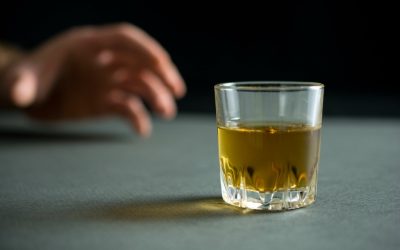Whether you are struggling with addiction, mental health or both, our expert team is here to guide you every step of the way. In the event of alcohol withdrawal seizures, benzodiazepines are preferred over other anticonvulsants to prevent further seizures. So, the person must formulate a plan of how they will abstain from alcohol during this crucial time.
What Does It Mean To Have a Substance Abuse Problem?
Engaging in self-care activities helps individuals better cope with the challenges presented drug addiction by PAWS, such as mood swings, sleep disturbances, and cognitive difficulties. By prioritizing self-care, those in recovery can build resilience, reduce stress, and create a strong foundation for long-term recovery success. Managing Post-Acute Withdrawal Syndrome (PAWS) can be challenging, and professional treatment plays a vital role in helping individuals navigate this difficult phase of recovery. Stress-reduction techniques are essential for managing the emotional and psychological symptoms of PAWS. Mindfulness meditation and deep breathing exercises can help calm the mind and reduce anxiety. Physical symptoms of PAWS can be distressing and may interfere with daily functioning.
Will Over-the-Counter Medications Help?
The risk is highest between 24 and 48 hours after the last drink but can appear earlier. If you’re experiencing intense withdrawal symptoms, individual or group therapy is a fantastic option that we strongly recommend. Having people with first-hand knowledge to talk to will help put things into perspective and motivate you to keep going. Recognizing these elements is vital for successful treatment and management of alcohol withdrawal. Paramount Recovery Centers, situated in Massachusetts, stands as a leading option for those seeking treatment for alcohol withdrawal.

Recognizing the signs and symptoms of PAWS

Sleep disturbances are prevalent, with individuals experiencing insomnia, vivid dreams, or altered sleep patterns. Coping with mood-related PAWS symptoms requires a multifaceted approach. Engaging in regular exercise, practicing relaxation techniques like deep breathing and meditation, and maintaining a consistent sleep schedule can help regulate mood. Participating in support groups and individual therapy can provide valuable coping strategies and a sense of community. Anxiety and panic attacks may occur as the body’s stress response system becomes dysregulated.
Secondary Withdrawal Stage (24-48 hours)

If you continue to drink, additional alcohol will remain in your bloodstream until the liver can metabolize it. Join our supportive sober community where each day becomes a step towards personal growth and lasting positive change. After a while, the brain increases certain chemical production to counteract the persistent sedative effects of alcohol. When alcohol is suddenly removed from the system, the brain amps up and quickly becomes overstimulated. Before you begin treatment, staff will take time to communicate the types of medications that will work best for you and your continued treatment program. If any of this sounds familiar, and if AUD runs in your family, Oar Health might be right for you.
After symptoms subside, a doctor will taper the dose until they determine the individual no longer https://ff4d.site/sober-living-vs-halfway-houses-understanding-the/ requires medication. Alcohol withdrawal refers to a condition that may occur when an individual with alcohol use disorder suddenly stops or significantly reduces their alcohol consumption. A person may notice initial symptoms after a few hours that could last for up to a week or longer. Alcohol withdrawal symptoms can range from uncomfortable to life-threatening.
Quit Gutkha in Maharashtra: Your Path to Recovery
Alternative medications like lorazepam or oxazepam may be preferred for individuals who are elderly or suffering from liver impairments. Such meticulous management is vital for ensuring both safety and ease throughout the process of withdrawal. It is essential for individuals undergoing this intense phase to be under strict medical watchfulness, as it helps control the severe withdrawal symptoms and avert perilous outcomes such as delirium.
- Alcohol withdrawal is a set of symptoms that may unfold when someone who has become dependent on alcohol suddenly stops or drastically reduces their intake.
- Those with pre-existing mental health conditions or a family history of addiction may be more susceptible to prolonged PAWS.
- Mild withdrawal consists of less severe symptoms such as headaches, anxiety, irritability, and insomnia.
- Anti-seizure drugs such as gabapentin and carbamazepine can help reduce your craving for more alcohol.
Your body has started mending from the harmful effects of alcohol, showing you tangible benefits of quitting alcohol. Clinicians diagnose alcohol withdrawal based on a detailed patient history of alcohol use, a physical examination, and the presentation of alcohol withdrawal syndrome symptoms characteristic symptoms. Post-Acute Withdrawal Syndrome, or PAWS, refers to a number of withdrawal symptoms experienced following the acute withdrawal phase of recovery. Continued assistance and nurturing are essential for lasting recovery from dependence on alcohol following the initial detox period. Therapy and counseling, which encompass behavioral treatments, provide vital strategies for coping as well as necessary emotional reinforcement. The health consequences of alcohol withdrawal from sustained use can be both deep and complex.
More importantly, you can look back on your timeline for quitting alcohol and appreciate the immense strides you’ve taken. This phase is also prime time to explore new hobbies or deepen existing interests, strengthening your sense of purpose. Send them this article and ask them for support and understanding while you go through this process.


Add a Comment